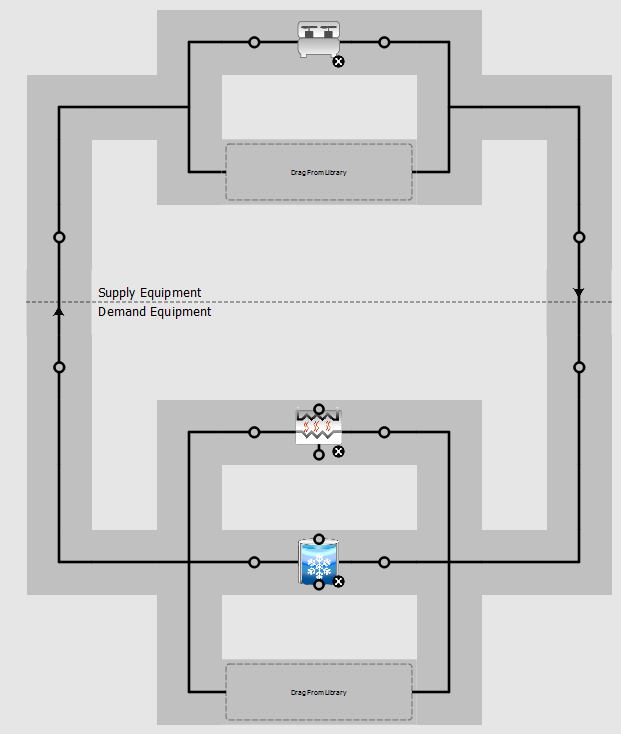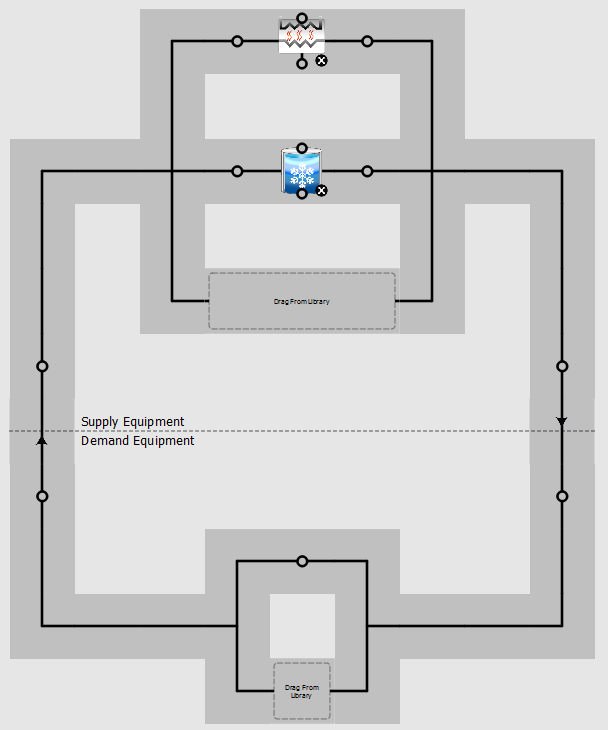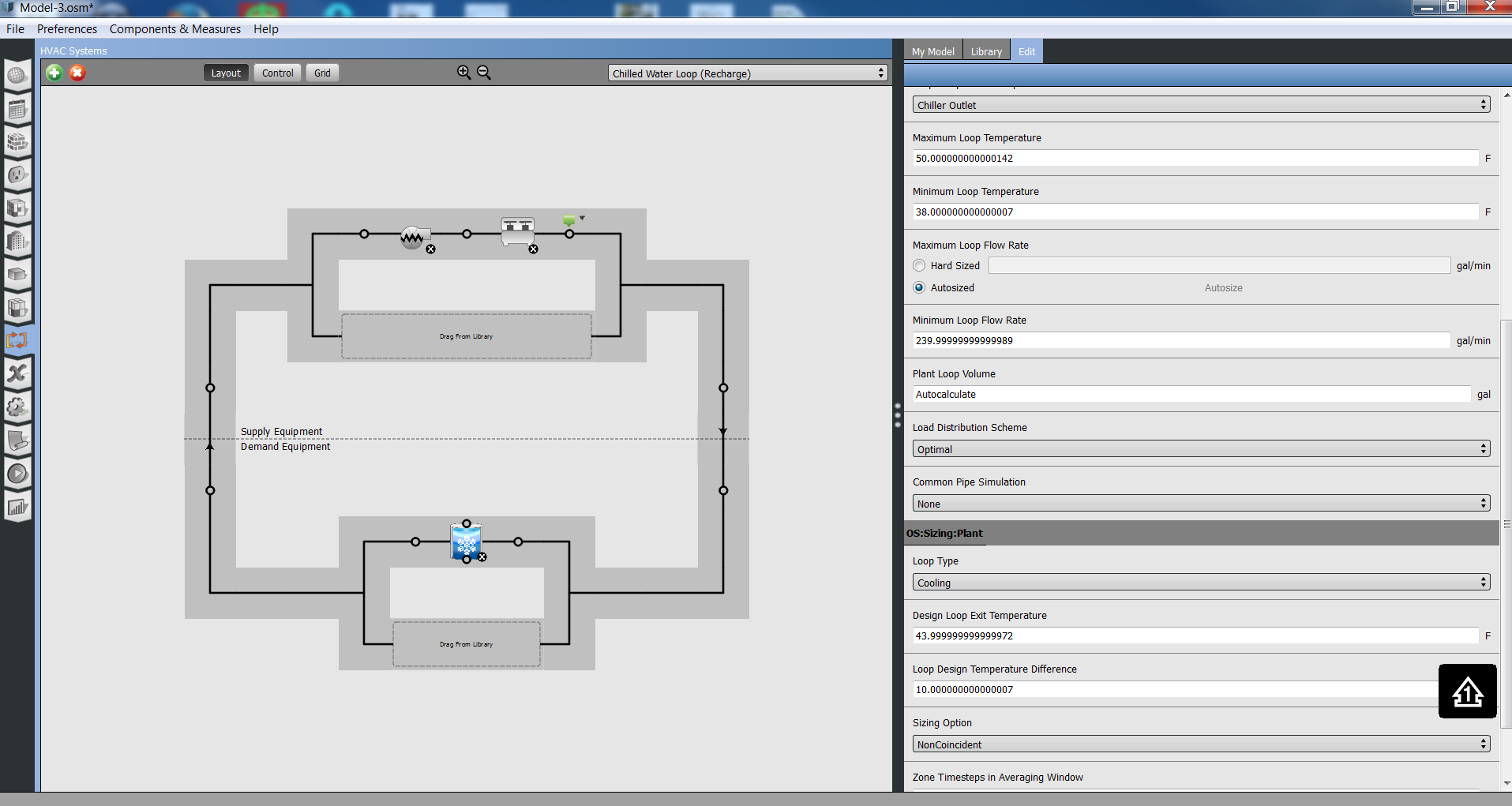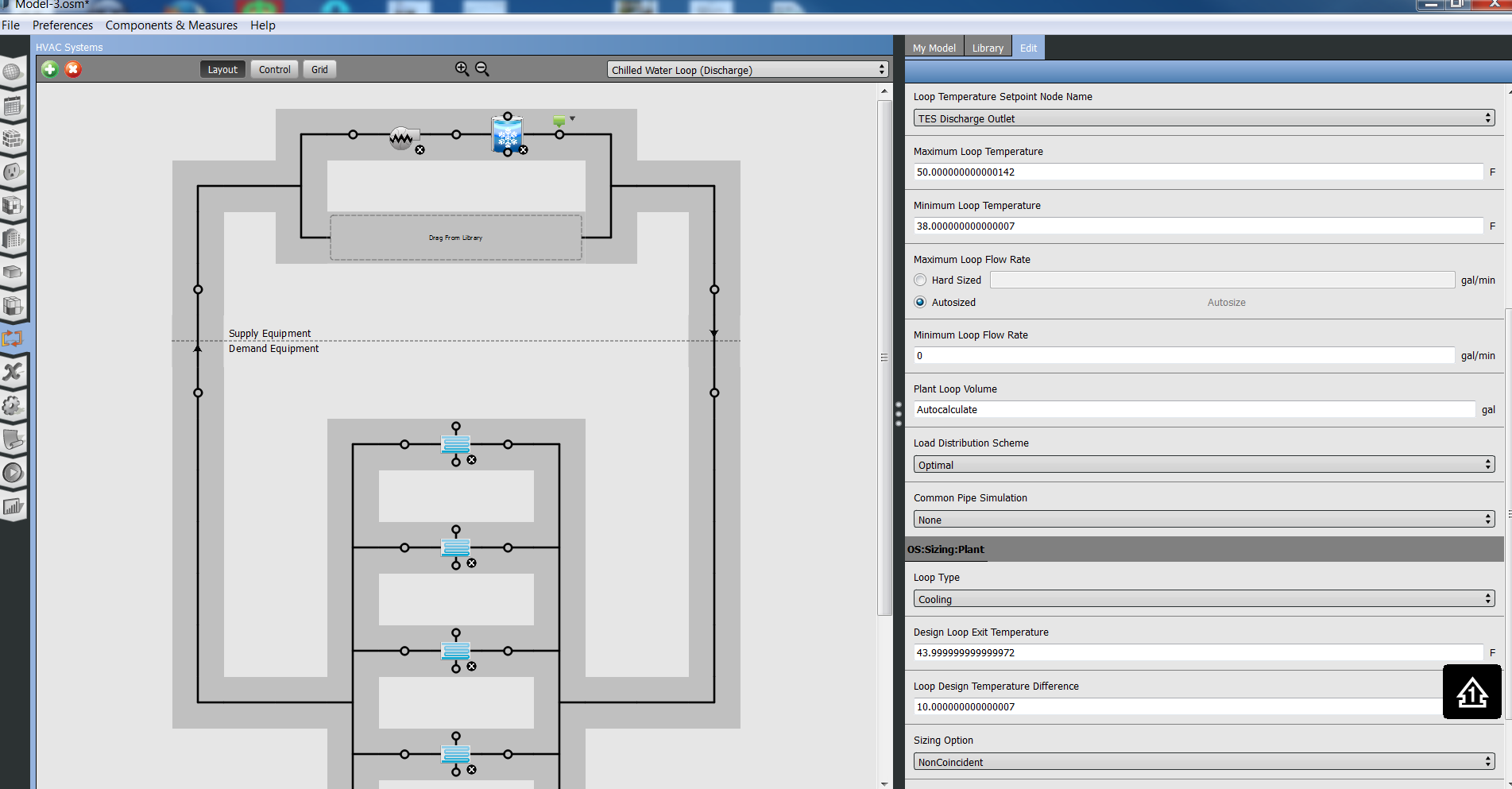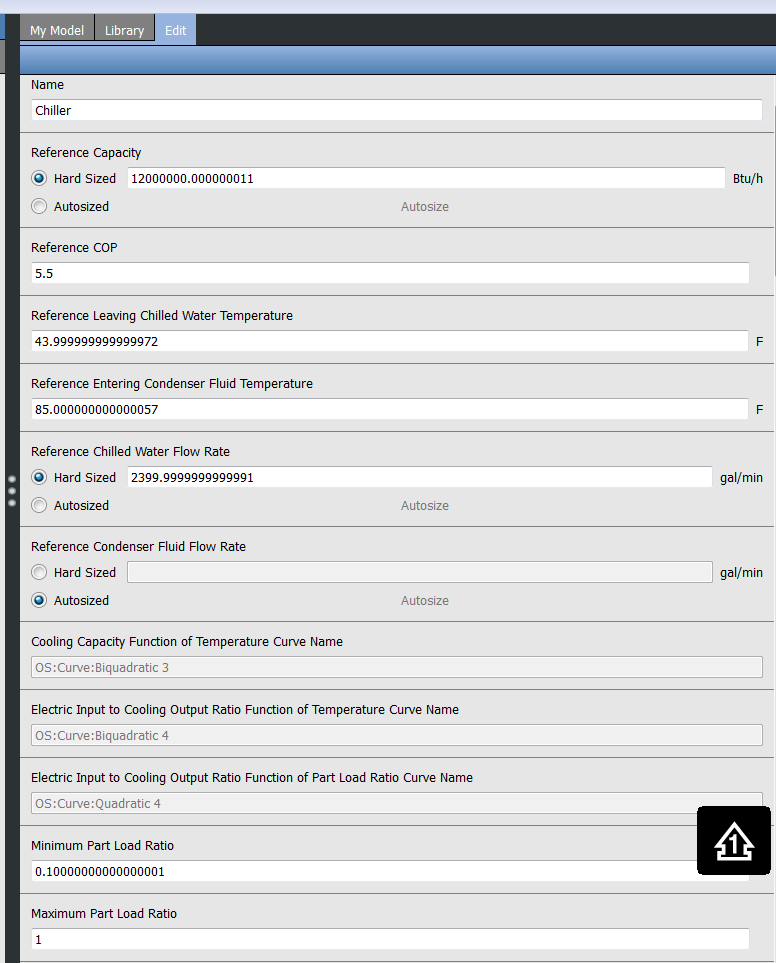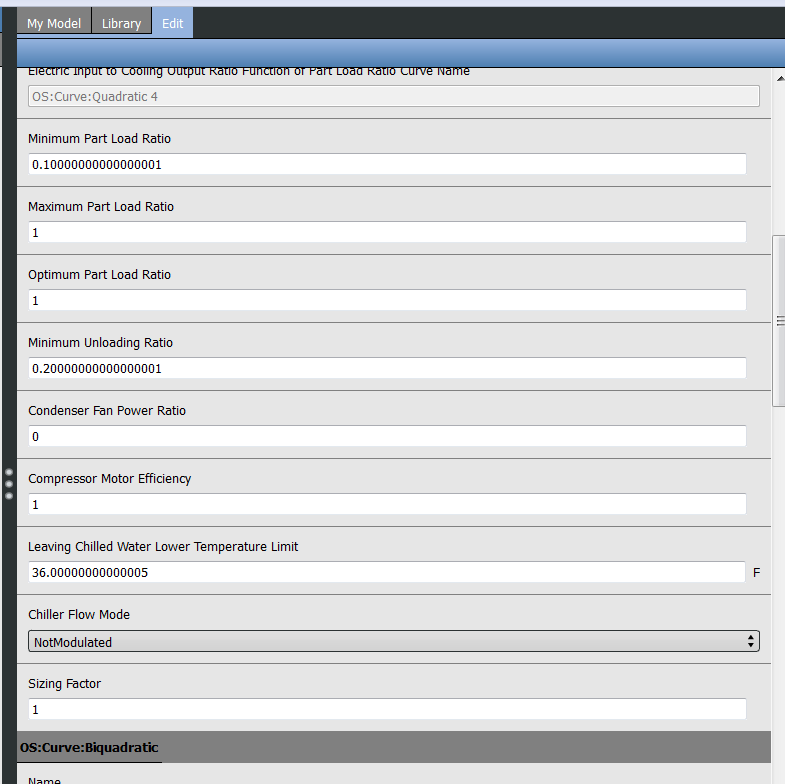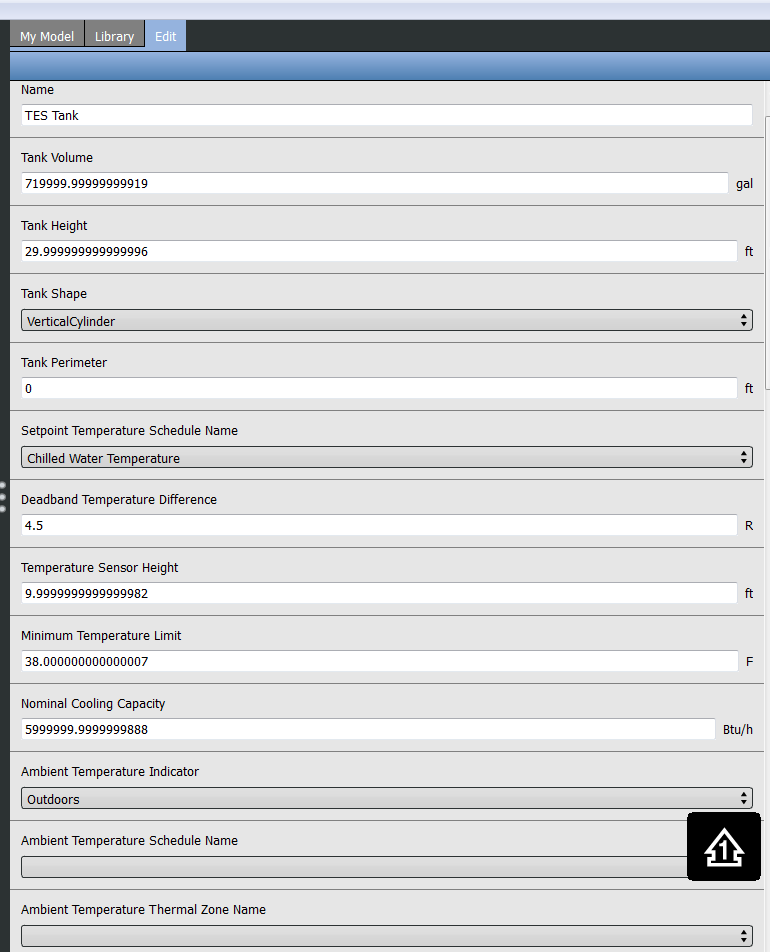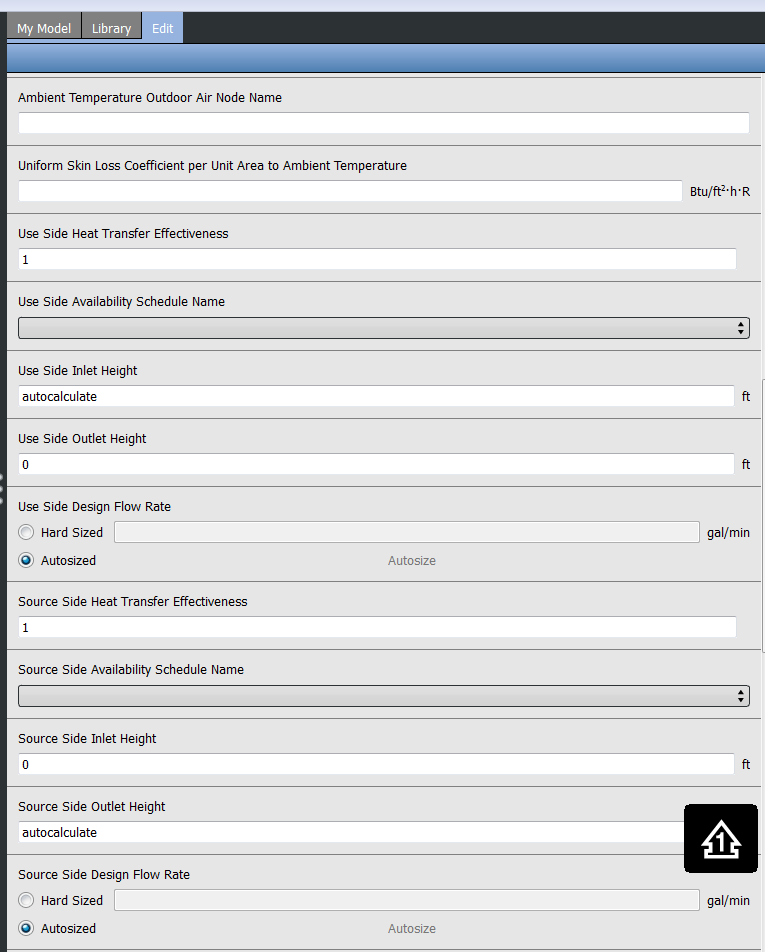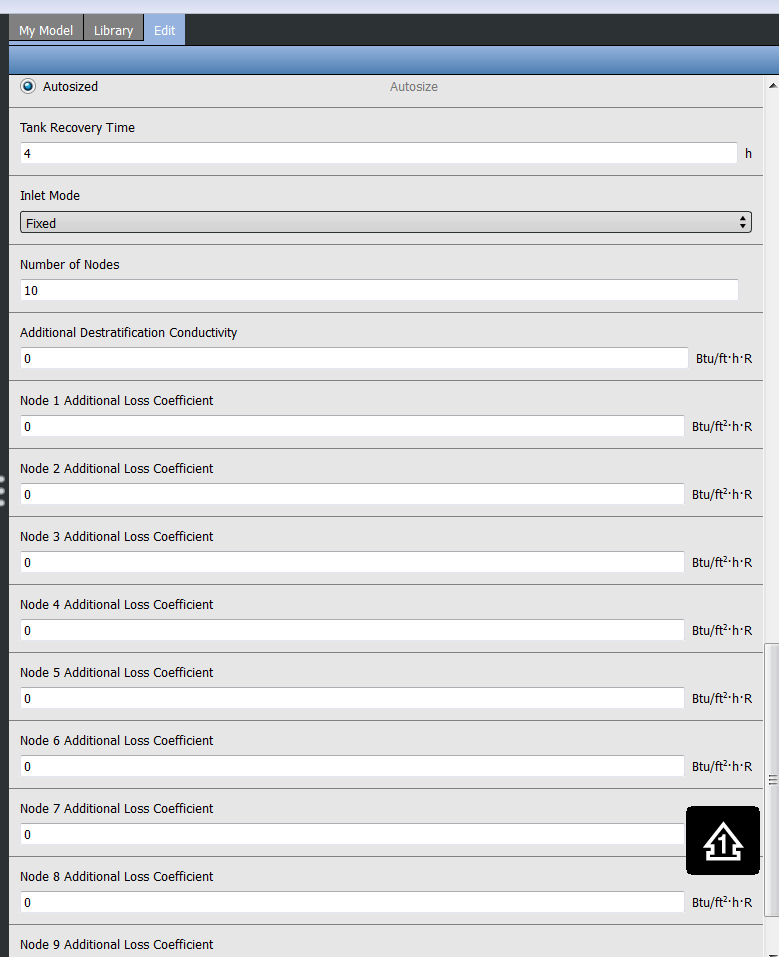Thermal Energy Storage configuration
I am trying to configure a simple chilled water loop to include a Thermal Energy Storage (TES) tank. The Plant Applications guide suggests for this to be in series with the chiller, but in the configuration I have in mind, it is in parallel with the chiller.
The intent is for either the chiller or the tank or both to supply chilled water to the air handlers during the day, and for the chiller to supply chilled water back to the tank during the night. So, following EnergyPlus/OpenStudio lingo, in a sense, the tank would be on the "supply" side during the day but on the "demand" side during the night?
Somehow, I suspect this is related to the source and use sides of the ThermalStorage:ChilledWater:Stratified object - alas, it talks about source side inlet and outlet and use side inlet and outlet, so I would suspect there to be four nodes on this object, but there are only two?
In essence then, how would I incorporate this tank on the "HVAC Systems" tab of OpenStudio - other than in series with the chiller - so as to achieve my objective above? I searched high and low but could not find any suitable screenshots online.


